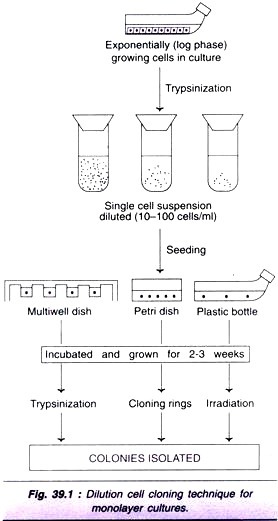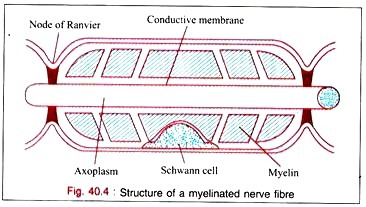In this article we will discuss about the structure of adenoviruses (explained with diagram).
All adenovirus particles are similar; particles are medium-sized, non-enveloped having 90-100 nm diameters (Fig. 17.5). The particles have icosahedral symmetry which can easily be visible in the electron microscope by negative staining. Viral particles are composed of 252 capsomers: 240 hexons forming the faces and 12 pentons at vertices of icosahedron (2-3-5 symmetry).
Each penton bears a slender fiber. The penton fibres consist of a slender shaft with a globular head. They are involved in the process of attachment of the virus particle to the host cell via the coxsackie-adenovirus receptor on the surface of the host cell.
The thin fibres protruding from each vertex of the icosahedral particle are just visible and the triangular faces of the icosahedral particle can be made out. But during preparation for electron microscopy, the fibres easily become detached.
Adenovirus gene products and their functions are given in Table 17.2. The hexons consist of a trimer of protein II with a central pore, there is no protein I. The proteins VI, VIII and IX are the minor polypeptides which are also associated with the hexon.
They are thought to be involved in stabilization and/or assembly of the particle. The pentons are more complex; the base consists of a pentamer of protein III, 5 molecules of IlIa are also associated with the penton base.
The pentons have a toxin-like activity. A trimeric fibre protein extends from each of the 12 vertices (attached to the penton base proteins) and is responsible for recognition and binding to the cellular receptor. A globular domain at the end of the adenovirus fiber is responsible for recognition of the cellular receptor.
There are at least 10 proteins in the adenovirus capsid (Table 17.2). The double-stranded linear DNA is associated with two major core proteins: terminal protein (TP) and VII. Terminal protein is covalently attached to the 5′ ends of the genome strands. Protein VII (1070 copies/particle) is arginine-rich basic protein (similar to histones) which is covalently associated with the genome forming a ‘chromatin-like’ substance.
Genome structure is one of the characters used to assign viruses to groups (70-95% homology within groups, 5-20% homology between groups). Genome of adenovirus is linear, non-segmented, dsDNA of 30-38 kb size which varies from group to groups (Fig. 17.6). Although adenovirus is larger than the other viruses in Baltimore’s group, still it is a very simple virus and is heavily reliant on the host cell for survival and replication.
Theoretically, it has the capacity to encode 30-40 genes. The terminal sequences of each strand are inverted repeats; therefore, the denatured single strands can form ‘panhandle’ structures (100-140 bp). A protein of 55 kD is covalently attached to the 5′ end of each strand. It is required as primers in viral replication and ensures that the ends of the virus linear genome are adequately replicated.
Gene expression and synthesis of viral proteins are given in Table 17.3.



